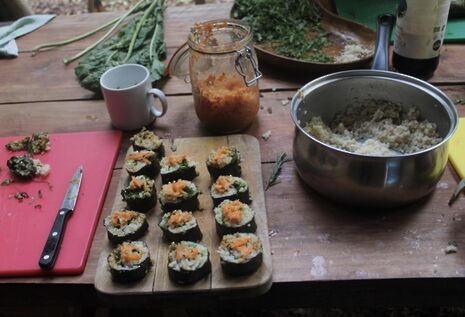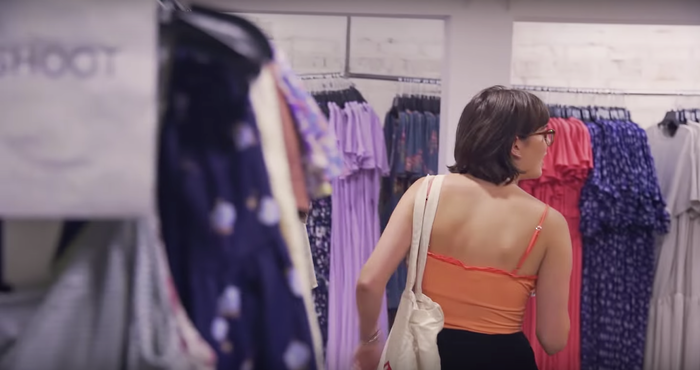Binning those habits: An eco-friendly diet
For her new column on sustainable lifestyles, Matilda O’Callaghan has some tips on how to turn your eating habits green

Every year the UK wastes 14.3 million tonnes of food of which 4.4 million tonnes could have been eaten, according to Eurostat. This waste is sent to build up in landfill, or recycled where huge amounts of energy are needed. In addition, there are greater environmental pressures as more and more food is demanded and produced.
Things are starting to change, and through these small actions we can all make a big difference
Along with these environmental costs, households lose on average £470 per year from wasted edible food. Here are several ways in which we, as students, can help reduce food waste while helping the homeless and saving the environment – as well as your wallet.
Forget shopping 'til you drop
There have been many occasions where I have gone out for some milk, and ended up returning with reduced priced eggs, old bananas, and baking ingredients hoping to whip up a Mary Berry banana cake. Yet, with a new essay sent through to my Hermes, I quickly forgot about my baking dreams, and all the food had to be thrown out in a few days. I have now learned the lesson of writing down exactly which groceries I need in a shopping list and sticking to it. I always pick the item with the latest best before or use by date. So while I hopefully won't eat all those croissants at once, they'll at least last a few days.
Share food, make friends

A few colleges, such as Girton, have created Facebook groups for those left-over food items or dishes that someone else might want. Last night might have been your third pasta bake and you just can't stomach another portion, but there is definitely a hungry student in the next staircase who can. So use your college’s Facebook group, or set up your own to share excess food and make new friends. There's also the Leftoverswap app, which lets you share your leftovers with people nearby.
Cold, colder, frozen!
Make use of all those containers from your takeaways to keep leftovers in the fridge or freezer, ensuring that you label them. Keep food that is going out of date near the front so you will eat it, rather than it being hidden from sight. Salad leaves keep for longer if a paper towel is put in the packet, preventing them from going too soggy. Fruit and produce is best stored in the bottom drawer of the fridge, so they are cool but will not freeze. The app Still Tasty tells you how long your food on average will last, warns you when your food expires and also helps you create shopping lists.
What on earth can I use this for?

A few eggs, flour in the cupboard, leftover cheese and one hungry student with not much time! However, there is no need to go out to the shops and buy a pizza - a perfectly good meal can be made out of the ingredients you still have! Just type the food you have into Tesco Real Food and it comes up with several recipes you can use. Suddenly, those annoying leftover items have become a soufflé fit for even Nigella.
Finding food a home with the homeless
I have recently started volunteering with FoodCycle, both at home and in Cambridge; it's a great way to get actively involved in reducing food waste. This organisation collects waste food from supermarkets and restaurants that's still fit to eat, and provides a free meal to anyone who needs it. Giving a few hours of my week to help prepare and cook a meal for someone else is definitely worth it. It also helps us escape from the Cambridge bubble and understand food poverty facing our fellow residents. Helping food banks or other organisations are a great way to do this as well.
There are plenty of ways to contribute to reducing food waste, especially with the aid of our smartphones. Things are starting to change, and through these small actions we can all make a big difference in improving our environment and communities.
 News / Pembroke to convert listed office building into accom9 December 2025
News / Pembroke to convert listed office building into accom9 December 2025 News / Gov declares £31m bus investment for Cambridge8 December 2025
News / Gov declares £31m bus investment for Cambridge8 December 2025 Features / Searching for community in queer Cambridge10 December 2025
Features / Searching for community in queer Cambridge10 December 2025 News / Uni redundancy consultation ‘falls short of legal duties’, unions say6 December 2025
News / Uni redundancy consultation ‘falls short of legal duties’, unions say6 December 2025 Lifestyle / Into the groove, out of the club9 December 2025
Lifestyle / Into the groove, out of the club9 December 2025










